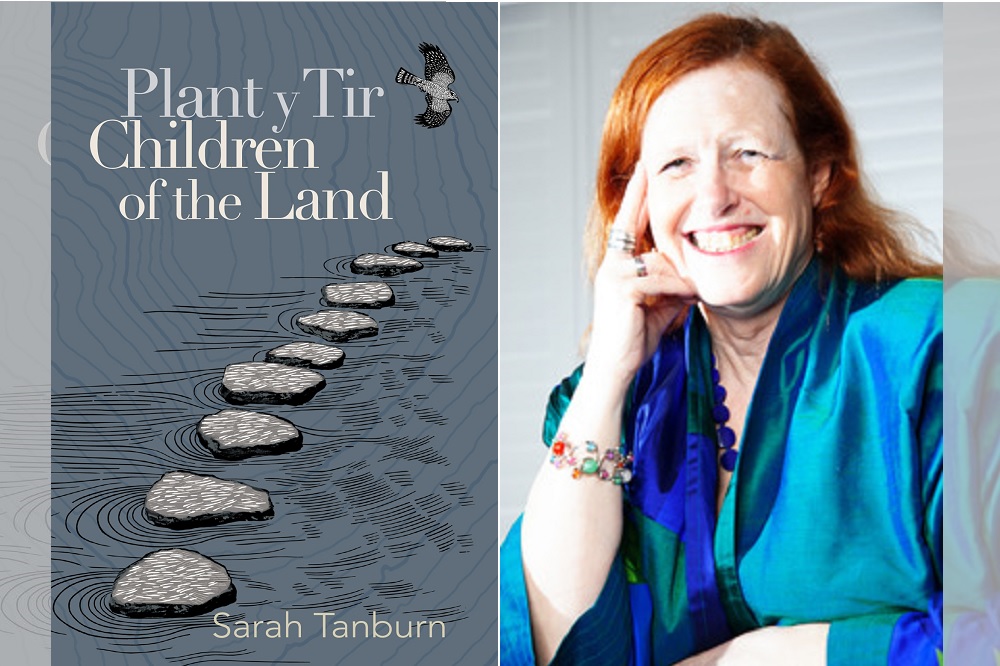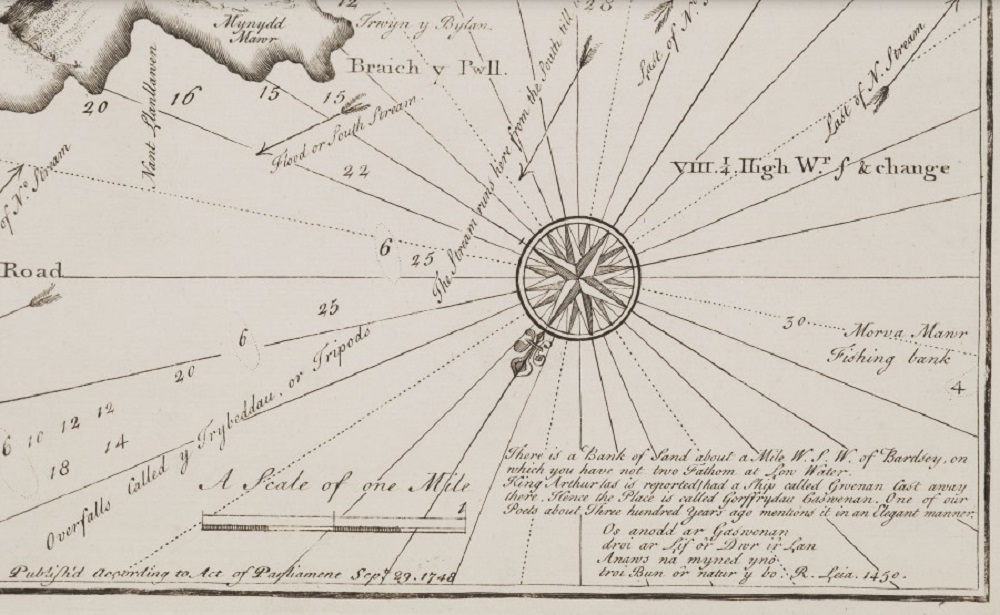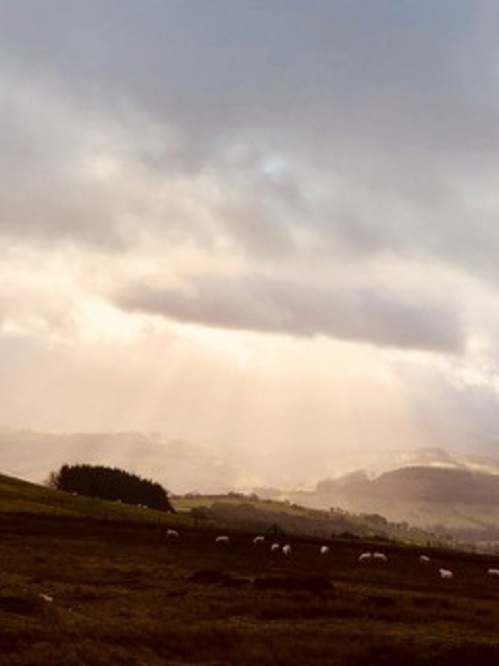On Being a Writer in Wales: Sarah Tanburn

Sarah Tanburn
Hedges, lava and more
Walking above Trallong between high Powys hedges on a cold December day, I learned of a niche economy — breeding racing hawks for desert racing. Back at home, intrigued by the notion of such connections, I discovered the griffons, the Adar Llwch Gwin who came from behind the north wind and doomed their beloved master.
My imagination hatched their descendants from long-hidden eggs to fly again, free and murderous, in the skies of Cymru.
On Ynys Llanddwyn, I was delighted to see pillow lava, that exotic rock-cushion formed when magma meets ice. I had last touched its deceptive sharpness in Antarctica, and here it was, on the beaches of home.
The treacherous, smiling Strait is younger than the rocks, a stripling beside ancient Gwna, the volcano slumbering beneath its popples and tides. I wondered what would happen should the water and earth resume their ancient, loving battles.
In 2013, Cardiff University, the British Academy and the Learned Society of Wales asked me to report on two conferences about devolution, which turned into a slim book. I reprised the debates for Nation.Cymru just a few weeks ago.
Governance, the politics of nationhood, relationships between regions and states, have been part of my professional life for many years, given new urgency by the ongoing battles between the Bay and Westminster.
Lewis Morris fought hard to have his detailed charts of the Welsh coast published by a recalcitrant Admiralty. In the 1740’s they proved popular.
He included some tales, including Arthurian wrecks at the mouth of Bardsey Sound. It’s not what most hydrographers do, but this, after all, was Wales. His charts made their way into the novel I am now completing.

One of the best decisions I ever made
I chose to live in Wales in 2015, and it has proved to be one of the best decisions of my life. The welcome, inspiration and challenges I have found have been moving and exciting: the landscape, ancient and modern history, the language and the new friendships I have made have all nurtured me as a writer.
So many discoveries emerged as I settled after a decade of travel, so many opportunities to make new stories.
There is some Welsh blood in my veins, but I was born and brought up in England. I’m a bit Scottish too. My grandfather’s family arrived in London from Germany around 1900 and I am, he told me, ‘Jewish enough for Hitler’. A European mixture, committed to peace across the continent.
I came because of old friends who had settled in Cardiff, but I have been given so much more. In 2018 I signed up for a part-time creative writing doctorate at Swansea, a six-year decision. After such a long time I am glad to be nearly done, but it has been a joyful journey.
A newly-introduced friend said to me the other day, that being Welsh is where you are at, not where you have been. His words were another croeso, a happy repetition.
Changeable world
Those hawks in their burqas near Aberyscir became the brightly-feathered stars of a story which won second place in the 2019 Rheidol prize.
That recognition from the New Welsh Reader, for work with a Welsh theme or setting, was such a boost to me. In that novella, I had imagined a different Cymru, one moved by myth certainly, but occupying a changeable world.
Climate change is hitting home. Scotland is independent, Ireland is united, and Wales is in distant kinship to its larger neighbour. In this future Wales, travel is difficult, the capital is in Aberystwyth (Cardiff being flooded) and Cymraeg is the main language.
I thought of the nature of economic relationships in a fractured, realigned world and how Wales might find new ways to manage when high-polluting extractive mining is off the agenda.
Covid toponyms
Like so many of us during lockdown, I walked out of the front door to explore my locale. From Fairwater I scouted outwards, across fields now covered in new homes but then still open and full of flowers.
My partner and I told each other anecdotes of our small adventures exploring those fields and woods and we searched them out on the old tithe maps before giving them our own names, our Covid toponyms for that area where the city melts into the Vale.
I went back to the world of my Adar Llwch Gwin and found plenty more to say. I have now set five tales in this complex, detailed future.
Each takes you to a real place, found on the maps, where sand and rock have crunched under my boots and I have watched the Swellies boiling and buzzards circling over fields filled with lambs: Rhossili, Eryri, Bannau Brycheiniog, Caerllion, Caernarfon and more.

Dreams and nightmares
These stories were a joy to write. Language itself was part of the adventure as I sought to show the ways in which the future is both the same and yet another country, where the imagined becomes the possible.
Enfys, heroine of Y Llif, visits Efrog (York) and sees the river water seeping across the Minster floor so it glittered in the sunlight pouring through the high stained glass, and the statues frozen in white stone seemed to shiver with life, prepared to step down at any moment and stride towards the hills.
I aimed to capture those ancient tales, the changes coming at us with every season, the impact of legends made life.
The fantastical, political world lent itself to magical realism. I made monsters and angels, an afanc and the spirit of the straits. The wood to burn corpses on an open pyre will grow on Penrhyn Gŵyr while the Worm opens her eyes to fire. The constancy is in the land itself. Even in such a world, and as always in my work, women are at the centre. In my future Cymru, you will meet some fierce characters.
Not all of them are fully human as we understand the term today, but they are all profoundly Welsh. `They have important roles in the way we might understand this future land, but, as Mwyn learns from her absent mother, to become the Lady, you must breed and you must kill.
There is little softness or forgiveness in these pages, either for ancient wrongs or their own misjudgements.
Whatever the title, these are not for children to read. I hope they will give you both dreams and nightmares.
Cautionary tale
The collection is now available in Children of the Land. The book is, in a sense, my love-letter to Wales, but might also be a cautionary tale, or a fable.
Writing in this country I want to look forward, not back, whether that is to meet the heroines we need, or where the money will come from, or even how the land itself will react to our depredations.
Yet I am inspired by that long history, so little respected east of Offa’s Dyke, by the persistence and resilience which has turned Yma o Hyd into a twenty-first century anthem. Wales has been good to me and I am both proud and grateful to be living and writing here.
Children of the Land is published by Lady Turtle Press from 12 May 2023.
The book is available at all good bookshops or online. The first launch event will be held at Griffin Books in Penarth on 17 May, with free tickets available. Contact via [email protected] for author events.
Support our Nation today
For the price of a cup of coffee a month you can help us create an independent, not-for-profit, national news service for the people of Wales, by the people of Wales.






